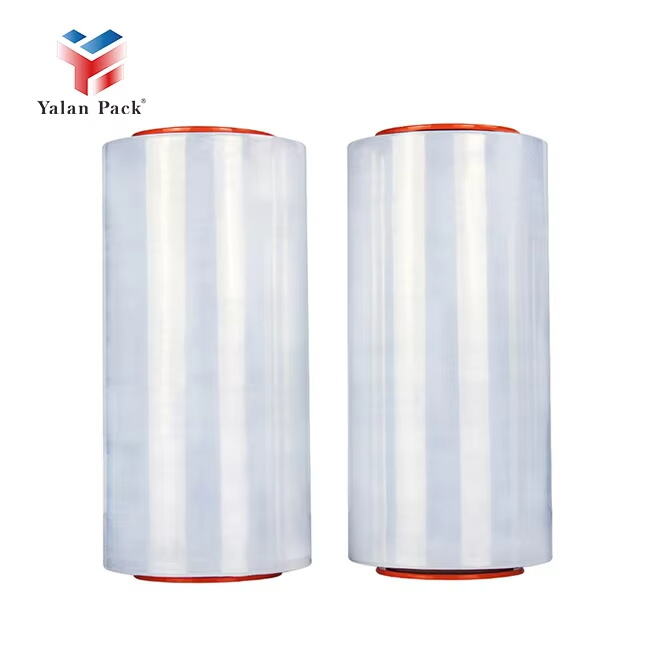A műanyag fóliacsomagolás kiválasztásának kulcskérdései
A teherbírás és termékjellemzők értékelése
A megfelelő választás rugóanyag film a csomagolás során meg kell érteni a termék teherbírását és jellemzőit. Először is figyelembe kell venni a termék súlyát és méreteit, mivel ezek határozzák meg a film szükséges vastagságát, szélességét és hosszúságát. Például nehezebb termékek esetén vastagabb fóliákra van szükség a tartósság és a szakadás megelőzése érdekében. Emellett fontos értékelni a termék természetét – hogy törékeny, éles vagy folyadékot tartalmaz-e. A különböző jellemzők különféle védelmi igényeket támasztanak, így fóliák kiválasztása például buborékfólia törékeny árukhoz vagy tartós polietilén éles tárgyakhoz ajánlott. Az iparági szabványoknak a csomagolásra vonatkozó kutatása biztosítja az előírások betartását, és segít kiválasztani az anyagokat, amelyek megfelelnek a szükséges szilárdsági és hajlékonysági paramétereknek. Ezeknek a szempontoknak a figyelembevételével a vállalkozások hatékonyan védhetik termékeiket szállítás és tárolás közben.
Környezeti feltételek és használati időtartam értékelése
Az életkörülmények és a használat időtartama egyaránt fontos szerepet játszik a műanyag fóliacsomagolás kiválasztásakor. Figyelembe kell venni olyan tényezőket, mint a hőmérséklet, a páratartalom és a napfénynek való kitettség, mivel ezek jelentősen befolyásolhatják a fólia teljesítményét. Magas hőmérséklet esetén például polietilén-tereftalát (PET) használata javasolt a hőállósága miatt, míg páratartalmas környezetben a nedvességálló poliolefin (POF) típusú fóliák lehetnek megfelelőek. A tárolási időtartam és a tárolási körülményeket is meg kell vizsgálni, hogy biztosítsák a kiválasztott fólia minőségének megőrzését a használat teljes időtartama alatt. Emellett a szállítási körülmények további kihívásokat jelenthetnek, mivel a termékek extrém környezeteknek is kitették magukat, így ellenállóbb anyagokra lehet szükség. Ezeknek a környezeti tényezőknek a mérlegelése segít biztosítani, hogy a fólia a használat teljes időtartama alatt hatékony maradjon, és megóvja a termék minőségét a gyártástól a kézbesítésig.
Gyakori műanyag fóliatípusok ipari alkalmazásokban
Nyújtófólia: Rugalmasság és raklapbiztonság
Zsugorfólia széles körben elismert rugalmassága miatt, valamint azon képessége miatt, hogy szorosan becsomagolja a termékeket, megakadályozva azok elmozdulását szállítás közben. Ez a rugalmasság biztosítja, hogy a raklapterhelés stabil maradjon, csökkentve a szállítási kockázatokat. A nyújtófólia használatával a vállalkozások javíthatják a raklapolási hatékonyságot, köszönhetően az egyszerű felhordhatóságának és költséghatékonyságának.
Statisztikák szerint a nyújtófólia jelentősen csökkentheti a csomagolási hulladékot, potenciálisan akár 50%-kal is csökkentheti a szállítási költségeket. Alkalmazkodó képessége és teljesítménye miatt megbízható csomagolási megoldás iparágakban, amelyek szállítási biztonságra és gazdaságos működésre törekednek.
Összehúzódó fólia: Hőformálás a termékvédelem érdekében
A zsugorcsomagoló fólia egyedi módon csomagolja a termékeket, mivel hő hatására szorosan követi azok formáját, így biztosítva egy megbízható és manipuláció-érzékelhető zárás. A hő alkalmazása kritikus fontosságú a termék védelmének maximalizálásában, különösen élelmiszer-csomagolás és üzleti kijelzők esetén. A zsugorcsomagoló fóliát alkalmazási sokszínűsége miatt tartják nagyra, különösen a megfelelő eltarthatóság növelésében.
A zsugorcsomagoló fólia romlási rátájának csökkentésére vonatkozó hatékonyságát is alátámasztják az adatok, amelyek szerint akár 40%-os romlás-csökkenés is elérhető. Képessége, hogy védőburokot képezzen a termékek körül, elengedhetetlen a termékminőség megőrzéséhez különféle környezeti feltételek között, valamint a fogyasztói bizalom fenntartásához üzleti környezetben.
A megfelelő műanyag anyagösszetétel kiválasztása
Polietilén (PE) változatok: LDPE vs. HDPE
A polietilén fajták ipari alkalmazásra történő kiválasztásakor nagyon fontos megérteni az Alacsony Sűrűségű Polietilén (LDPE) és a Magas Sűrűségű Polietilén (HDPE) közötti különbségeket. Az LDPE ismert rugalmasságáról és nedvességgel szembeni ellenállásáról, amely ideálissá teszi például zacskók és csomagolófóliák gyártásához. Ugyanakkor az HDPE kiváló szilárdságot és ütésállóságot nyújt, így nehezebb igénybevételnek kitett termékekhez, mint palackokhoz és ipari tartályokhoz ideális. A felhasználási trendek azt mutatják, hogy az HDPE iránti kereslet növekszik a környezettudatos piacokon annak újrahasznosíthatósága és tartóssága miatt, míg az LDPE továbbra is domináns abban az alkalmazási területeken, ahol a rugalmasság és a könnyűség a meghatározó.
Speciális polimerek: PET, PP és Nylon tulajdonságai
A speciális polimerek területén a polietilén-tereftalát (PET), a polipropilén (PP) és a nylon különálló tulajdonságokkal rendelkeznek, amelyek javítják a csomagolási megoldásokat. A PET kiemelkedő szakítószilárdságával és kiváló átlátszóságával vált népszerűvé italos üvegek és élelmiszeres tárolóedények esetében. A PP sokoldalúsága olyan alkalmazásokban ragyog meg, amelyek hőállóságot és nedvességzáró képességet igényelnek, például nassolnivalók csomagolásában. A nylon, amely kiemelkedő gáz- és nedvességzáró képességgel bír, gyakran szerepel élelmiszer-csomagolásokban a termék eltarthatósági idejének meghosszabbításához. Kutatások azt mutatták, hogy ezek a polimerek jelentősen javítják a csomagolások teljesítményét, különösen a nylon bizonyult hatékonynak vákuumos csomagolási alkalmazásokban.
Környezeti hatás és fenntarthatósági tényezők
Újrahasznosított tartalom előírásai és a kör economy
A hulladékanyagok újrahasznosításának beépítése a műanyag fóliacsomagolásokba az egy fenntarthatóságot elősegítő elengedhetetlen fontosságú lépés. Az újrahasznosított anyagok felhasználásával a gyártók elősegíthetik a környezetvédelmi célok elérését és csökkenthetik a nyersanyagokra alapuló forrásoktól való függőséget. Ez a gyakorlat nemcsak összhangban van a fogyasztók növekvő igényével a környezetbarát termékek iránt, hanem hatással van a vásárlási döntésekre is. A Recycling Council of Ontario által végzett tanulmány szerint a kanadaiak 91%-a részesíti előnyben az olyan termékeket, amelyek újrahasznosított anyagokat tartalmaznak. Ennek következtében azok a vállalkozások, amelyek ezeket az anyagokat alkalmazzák, gyakran tapasztalnak növekedést a vásárlói hűségben és a piaci részesedésben. Emellett a kör economy keretrendszer arra ösztönzi a vállalatokat, hogy szabályozzák tevékenységeiket a jobb környezetmenedzsment érdekében, kiemelve az erőforrások folyamatos újrahasznosításának fontosságát. Az újrahasznosítás előtérbe helyezésével a vállalkozások hozzájárulhatnak a műanyagszennyezés csökkentéséhez, miközben támogatják a gazdasági növekedést az erőforrás-hatékony stratégiák révén.
Lebonthatósági szabványok és komposztálható opciók
A műanyagfóliák biológiailag lebomló szabványai meghatározóak környezeti hatásaik értékelésében, amelyeket szigorú vizsgálati eljárások alapján határoznak meg. Ezek a szabványok mérik, hogy az áruk mennyire képesek természetesen lebomlani és mennyi idő szükséges ehhez a folyamathoz. A komposztálható fóliáknak sokféle felhasználási területe van, például élelmiszer-csomagolástól a mezőgazdasági fóliákig. Az előnyös anyagokkal ellentétben a komposztálható változatok csökkentik a hulladékot, mivel alkalmas körülmények között szerves anyaggá bomlanak le. Ennek az anyagnak a használatának jelentős előnyei vannak – a biológiailag lebomló vagy komposztálható műanyagfóliák alkalmazása jelentősen csökkenti a környezeti károsítást, csökkentve a szeméttárolókban keletkező hulladékot és a talajszennyeződést. Az Egyesült Államok Környezetvédelmi Ügynöksége (EPA) szerint a komposztálható fóliák lényegesen csökkentik az üvegházhatású gázok kibocsátását. Azok a vállalatok, amelyek ezekre a megoldásokra fektetnek, nemcsak fenntarthatósági profiljukat erősítik meg, hanem eleget is tesznek a fogyasztók növekvő igényének az ökologikus csomagolási megoldások iránt.

Szabályozási megfelelés és ipari szabványok
Vegyes csomagolási szabályozások műanyag fóliákhoz
A vegyes csomagolási szabályozások megértése kritikus fontosságú azok számára, akik műanyag fóliák gyártásával és forgalmazásával foglalkoznak. Ezek a szabályozások jelentősen eltérnek a különböző régiók között, így különböző megfelelési követelményeket támasztanak. Például az Európai Unió szigorú szabályozással rendelkezik a fenntartható használatra vonatkozóan, míg Ázsia egyes országai elsősorban a környezeti hatások csökkentésére koncentrálnak. A nem megfelelés súlyos következményekkel járhat, például jogi problémákkal és pénzbírságokkal, amelyek komolyan érinthetik egy vállalat hírét és pénzügyi helyzetét. Friss esettanulmányok, mint például az Egyesült Államok szövetségi politikájának változásai a újrahasznosítható csomagolóanyagok terén, bemutatták, hogyan tudják ezek a szabályozások befolyásolni az iparág gyakorlatának megváltozását, ösztönözve az innovációt és alkalmazkodást.
Tanúsítványok és biztonsági tesztelési protokollok
A tanúsítványok és biztonsági vizsgálati protokollok a műanyagfóliák biztonságának és minőségének garanciáját szolgáltatják. Elengedhetetlen, hogy a termékek rendelkezzenek például az FDA jóváhagyásával vagy megfeleljenek az ASTM szabványoknak annak igazolására, hogy megfelelnek az iparági irányelveknek. Ezek a tanúsítványok csökkentik a gyártók és fogyasztók kockázatait azzal, hogy garantálják a termékek szigorú biztonsági előírásoknak való megfelelését. A biztonsági vizsgálatok itt játszák a kulcsfontosságú szerepet, biztosítva, hogy a műanyagfóliákat alaposan ellenőrizzék minőségük és megbízhatóságuk szempontjából. Tekintélyes szervezetek, mint az ASTM International részletes vizsgálati protokollokat biztosítanak, amelyek garantálják a termékek biztonságos használatát és csökkentik az esetleges egészségügyi kockázatokat. Az érdeklődők részletes szabványokat illetően tanulmányozhatják ezeknek a szervezeteknek a publikált kutatásait, amelyek információtárként szolgálnak az érdekelt felek számára, akik az ilyen irányelvekhez szeretnének igazodni.
GYIK szekció
Milyenek a műanyagfólia csomagolás kiválasztásának legfontosabb szempontjai?
A kulcsfontosságú tényezők közé tartozik a termék terhelési igényeinek megértése, a környezeti feltételek, előírásokkal való megfelelés és az alkalmazási időtartam.
Hogyan befolyásolják a környezeti feltételek a műanyagfólia kiválasztását?
A hőmérséklet, a páratartalom és a napfény kitettség mint tényezők hatással vannak a fólia teljesítményére, így befolyásolják az anyagok – például PET vagy POF – választását az adott tulajdonságaik alapján.
Mi a különbség az LDPE és HDPE között?
Az LDPE hajlékony és nedvessézálló, ideális becsomagoláshoz, míg az HDPE erősebb és alkalmasabb nehezebb termékekhez, jobb ütésállóságot biztosítva.
Miért fontos a reciklált anyagok felhasználása?
A reciklált anyagok használata támogatja a fenntarthatóságot, csökkenti a nyersanyagokra való támaszkodást és eleget tesz a fogyasztók környezetbarát termékek iránti igényének.
Milyen előnyei vannak a komposztálható műanyagfilmeknek?
Csökkentik a környezeti terhelést azzal, hogy szerves anyaggá bomlanak le, csökkentve ezzel a szemétlerakókban lévő hulladékot és a talajszennyeződést.


